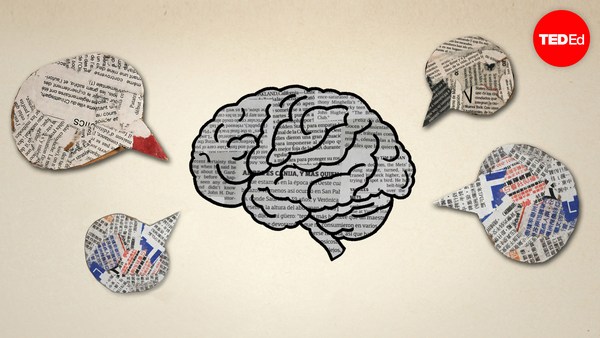Many years ago, I was finishing college and I was in that, “so what’s next?” phase of life, and I decided I wanted to see the world. And that was all well and good, but to do that I needed money and a job. So I headed off to my college's advising center, thumbed through a Transitions Abroad magazine, and there it was. It was this ad that said something like, “Do you want to teach English abroad?” And I thought, “well, if that’ll get me abroad, then yeah, I guess perhaps I do.” So fast forward to several months later, I had a fellowship and I was off to Finland for a year to teach English to elementary school students.
Now, before I got to Finland, I already knew that it was a really cool place, but what I didn’t realize was how linguistically diverse a place it was. Because I was on my way to teach elementary school students English, but those same students, unbeknownst to me, were already studying Finnish and Swedish and sometimes other languages in school. At the time I thought Finland must be some sort of multilingual anomaly. It couldn’t be the norm for elementary school students to be learning multiple languages, could it? Well, it turns out, globally, it often is. America really is more of a global standout, and not for good reason in this case. The US stands out due to its monolingualism in schools, which is in sharp contrast to the fact that this country is an incredibly linguistically diverse place.
So, how do I know? Well, I’ve been working with and studying multilingual learners for over 20 years. I’ve been a language learner, I've taught English as a second language and English as a foreign language. And I've carried out language policy research in several different countries. And this is what I’ve realized: here in the US, we’re doing it wrong. America is not tapping into what I see as our greatest asset, which is our linguistic diversity. So you might be thinking, okay, but does this even matter? And if it matters, what do we do about it? So, spoiler alert: it matters. And I'm going to talk about what we can do about it.
But first, I’d like you to come with me on a journey to an American public elementary school. Feel free to imagine your own from growing up, or maybe one near where you currently live, or maybe even one from TV. Now, let’s go inside. Once we step in, it’s immediately evident that this is a multilingual place. So, how do you know? Maybe there's posters and decor in multiple languages. Maybe you hear conversations happening with adults and students in different languages, and maybe there's even signs that explicitly say that multiple languages are welcomed and can be supported. Now let’s walk down the hall into a classroom. Inside, students are doing a math lesson in English. They’re working in small groups on word problems as the teacher walks around the class supporting the learning. And then, in Spanish, the teacher says it’s time to transition to a science lesson. She talks about the science content, hands out some papers for the day’s assignment. The students attentively listen, and then they begin to interact with each other and the new science content— all in Spanish. So one subject in English and the next subject in Spanish. Whoa.
How does this feel? Full disclosure, to me, this is like a school-based multilingual dream come true. But I bet that this also might feel kind of unnerving or surprising or a little bit chaotic to some. And I think that those feelings may stem from the fact that this true embracing of multilingualism is very, very unusual in the US and it’s very uncommon to see in American schools.
But here’s the thing, here in the US, we have tons of raw potential when it comes to language diversity. In fact, in 2022, Ethnologue ranked the US 5th of all countries in the world in terms of language diversity with 337 spoken languages. Similarly, nearly one quarter of students in American schools speak a home language other than English. This means that millions of students possess rich language skills, but we’re not encouraging the development of those skills alongside the development of English. And therefore we are not tapping into the linguistic diversity that exists among us and is already present.
When students enter schools, their language use and English proficiency is screened, and if they're in need of support, they're provided it. But their home and heritage languages are often set aside due to long standing policies and practices that focus heavily on English. Now, don’t get me wrong— I am not here to tell you that students educated in America shouldn’t learn English. Well, there’s no official language in this country. That’s right. There is no official language in the US. English absolutely is a lingua franca and it’s an important sociocultural and economic tool for communicating in various settings. However, students’ home and heritage languages are incredibly valuable too. And that is what we're missing. Students are entering schools with rich language backgrounds and cultural experience and knowledge. And schools are often ill-equipped to support that, which means that these languages often go uncelebrated, or even worse, over time, they’re lost and forgotten.
So it’s time that we stop leveraging dated policies
and operating schools in a monolingual way. But there’s good news here. Because research shows that there’s a language development program model called dual language that is highly effective for all students. And by all, I mean all.
There are different kinds of dual language programs, but the general gist is that participating students receive instruction in two languages, meaning that over time they become bilingual. Historically in the US, language policies and programs have often been subtractive, but dual language programs are additive, which means that they're focused on developing, cultivating, and sustaining two languages. And research shows that these programs are really good for all kids. Not only are they the most effective type of instruction for students who speak a language other than English, but they also benefit native English speakers, and students from diverse racial and ethnic backgrounds, and students with special education needs and exceptionalities. Students enter these programs speaking one language and they come out of these programs speaking, listening, reading, and writing in two languages proficiently. Dual language programs work and we could implement them around the country.
Because the fact of the matter is that being multilingual matters, both for the individual and for our society. Speaking multiple languages expands our worldview. It connects us to our own identity and links us to our communities, our cultures, and our families. And research shows that there’s these incredible cognitive benefits too. Brains function better and can do more when they’re multilingual. For instance, research indicates that bilingual brains are better than their monolingual counterparts at conflict management, and at executive functioning activities, like multitasking. I mean, the effects of this are incredibly far-reaching and impactful. It really is amazing, isn't it?
And it doesn’t end there, because there’s these economic and geopolitical benefits too. More and more jobs seek bilingual candidates, and being multilingual often leads to more lucrative job opportunities with global potential. Around the world, schools are producing bi- and trilingual individuals. But that’s notably uncommon here, which means that students educated in America are at a disadvantage globally in this way. As technology shrinks our world and leads to faster communication, and commerce, and political action, being multilingual can lead to increased opportunities for travel, study, work, and personal growth. So let’s go back to that journey we took. Because the fact of the matter is that doesn’t have to be a figment of our imagination.
That journey took us to a dual language program, and what we need to do is build and grow these programs in order to build and grow multilingualism. Through dual language, we have the opportunity to cultivate languages, honor cultural and linguistic capital, and foster connections within schools and communities. So instead of thinking of it as a journey, let’s think of it as a foundation upon which to build better school programs that honor the language diversity that exists among us. It's the first step towards celebrating and elevating multilingualism. Together, we can help students develop skills in more than one language. Students who will then go on to be multilingual adults, workers, travelers, community members, and global citizens.
Thank you.


